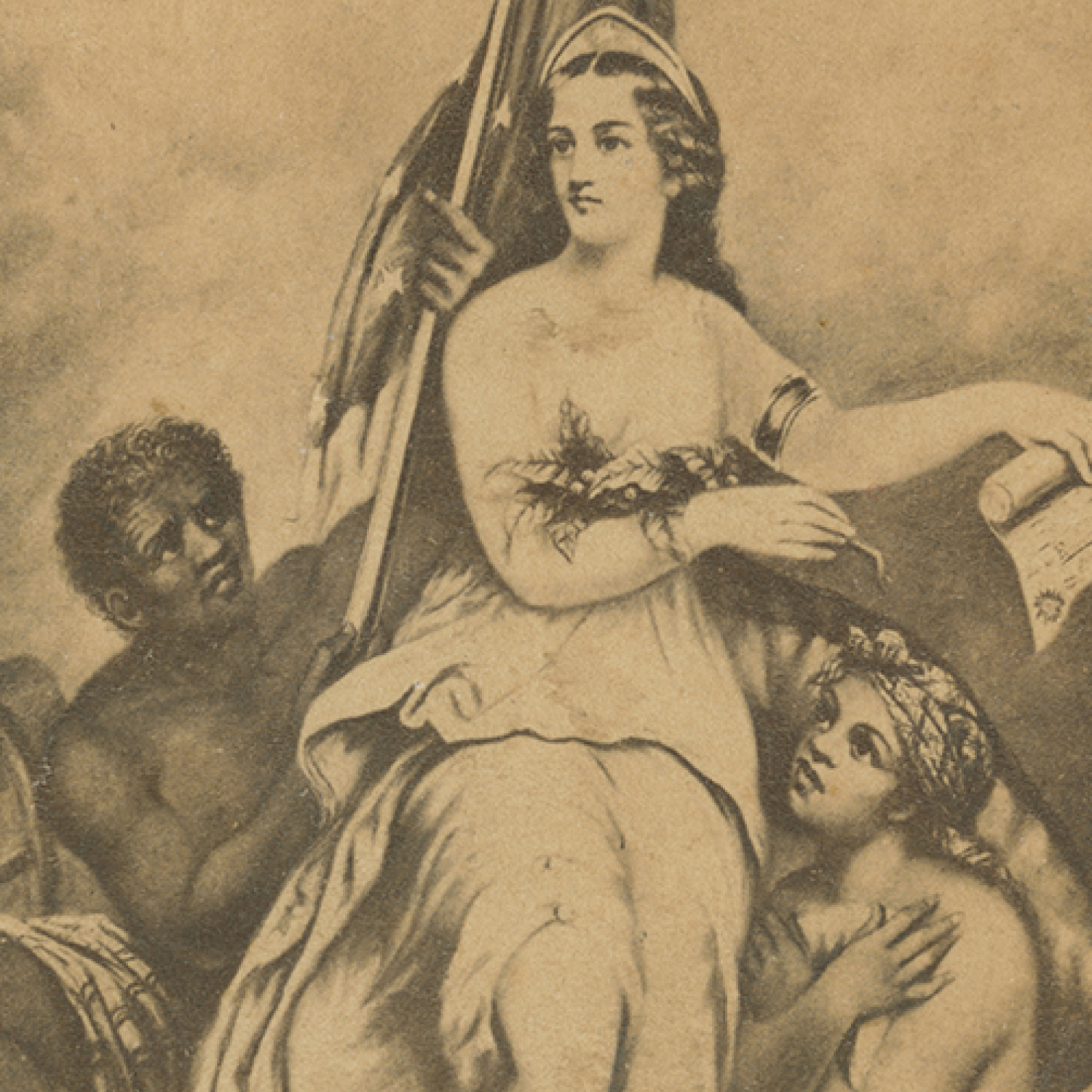
Girl on laptop|Someone getting tested
Girl on laptop|Someone getting tested
What Can Higher Education Offer Students in a Post-COVID-19 World?
When my university shifted to remote instruction in March due to the COVID-19 pandemic, instructors in my department experienced all manner of challenges. They reacted to these challenges with frustration, anxiety and, in a lot of cases, equanimity. We employ a number of English graduate students as instructors of first-year composition in the writing program I direct. My role involves training and mentoring these students as they work through their first semesters of teaching. If one of them wants to express feelings about challenges of any sort—including those concomitant to the transition of face-to-face instruction to online instruction—they come to me.Around the early part of May, one instructor reached out to explain how disrespected she felt by a particular student’s egregious lack of participation. Many more have grumbled about students’ faltering contributions to online class discussions, or, in more cases than we’d like to see, failure to submit major assignments. Both are a sad reality of online classes. There are others: For a student with an outstanding paper to turn in, it’s easier to evade an online instructor than one you face twice weekly. And it seems a matter of common sense that students who never see their peers in a classroom will suffer from a lack of connection to the course community—and, a potential consequence, a slump in motivation. But these are structural causes of nonparticipation. When the online structure of education is non-negotiable, in the face of a public health crisis, and the time available for redesigning course activities is virtually zero, any response to the tune of “that’s just the way it is” would be unhelpful, I knew. After all, in addition to a structural shift in the delivery of their instruction, students were experiencing a public—and, in some cases, personal—health crisis.
Students can’t be expected to succeed, in learning or in anything else, when they’re overcome by trauma.
Engaging With Students Means Engaging With Trauma
The appropriate response to this graduate-student instructor (let’s call her Carley) would have been, “I’m sorry, but these students are going through traumatic changes. It would be difficult to understand the range of ways they’re affected—suspended jobs, lost income, sick family members, kids at home and on and on. If they don’t perform well this semester, that’s just got to be okay.”But that could only be part of the response. Another part had to acknowledge Carley’s own trauma. She didn’t sign up to teach in an online format a course that she’d designed for face-to-face delivery. She didn’t sign up to lose hours at her second job as a bartender. She didn’t sign up to see the graduate courses she was taking radically and imperfectly convert to online delivery, or to have her contact with her cohort of grad students and other communities abruptly stop. At times like this, it’s useful to remind graduate-student instructors—and oneself—that, in many ways, they are similar to undergrads. It’s easier that way to sympathize with the struggles of both, and for instructors to offer generosity and forgiveness both to their students and to themselves. Unfortunately, at about seven or eight weeks into social distancing, with numbers of newly confirmed COVID-19 cases and of deaths continuing to climb, it was difficult to see how things were going to return to what we had come to consider normal.Many educators have begun to think and write about this problem. At just about the time I learned of Carley’s challenges, Cathy Davidson laid out some principles for designing courses for the fall 2020 semester. She asked readers to “Imagine the classroom of students in face masks sitting six feet apart, one part of the brain focused on school, another on parents or partners dying, on an uncertain future, on a crashing economy”—a point I’ve come near but never quite connected. Students can’t be expected to succeed, in learning or in anything else, when they’re overcome by trauma. In Davidson’s words, “if the trauma is not addressed, accounted for, and built into the course design, we fail. Our students fail. None of us needs another failure.” She recommended that educators design courses in ways that address the “emotional workload” our students are facing, and that we seek, now more than ever, to deliver “empowerment and agency” to our students by using “meaningful activities beyond the screen that extend the lessons of the course, building in ways students can be co-teachers as well as co-learners, actively contributing to the course.” “We need,” she concluded, “to think about what we all can offer one another—curiosity, imagination, knowledge, power—as antidotes to the present disruption and trauma, as tools towards building a future.”
Why would students come to college in a post-COVID world?
What Role Does College Play in a Post-Pandemic World?
Davidson’s provocation got me reconsidering how I should approach the teaching of first-year composition. Over the past few years, in my administering of our writing program, I’ve developed a curriculum centered around the intellectual exploration of argument. Students study the various positions previous writers had taken in a particular controversy and how those writers have argued for their views. Only after learning about multiple positions, and different strategies for supporting them, are students ready to register their own perspectives directly. The nature of the controversy they teach is the instructor’s to decide, and I encourage the instructors to choose one in which they have some interest and expertise.Like most of our social institutions and practices, higher education has been thrown into crisis by the coronavirus pandemic. Numerous fundamental questions have emerged about what these institutions and practices should—and even could—do and be going forward. A virtue of the curriculum I have used is that it prepares students both to participate in their civic community and to succeed in their academic careers. After all, controversy, whether civil or acrimonious, is necessary both in civic life and in academic disciplines to produce knowledge—about how community problems should be solved or about how we should understand historical, sociological, biochemical and engineering challenges. Citizens and scholars write to engage with problems their peers are struggling with, and they contribute to solutions by engaging with those peers. But what if social distancing became the new normal? Would public deliberation continue to be the process through which policy emerged as it had in democratic societies since classical Greece? Will the economy recover? If so, in what form? What will employment look like in the future? What role will higher education play in preparing citizens for the jobs of the new future? How will that affect college enrollment? Or to put the question differently: Why would students come to college in a post-COVID world?
I needed the old curriculum to do more of what it was always meant to do.
I Came Up With a Plan for Redesigning Our Writing Program; Then I Threw It Out
All these questions swirled around my mind in May, as I flirted with the idea of putting them at the center of the curriculum for the upcoming academic year. In my alternate curriculum, students would study such questions as: What do I want from a college degree at this time, particularly if the link between a particular major and a job has been severed? What role should universities play in American society? What portion of the expense of that service should be shouldered by the public, and what portion by students? Can the quality of education delivered remotely compare to the quality of face-to-face instruction? Should remote learning be priced the same as on-campus learning? One could even ask larger-picture questions. If the socio-economic crises of 2020 resulted in a radical transformation of the state, and something like a universal jobs guarantee were to emerge, students would never again need to choose a major simply because it could land them a job. What would be the consequences of such a transformation for the higher education classroom, for the liberal arts, for students, for society?I have decided not to pursue this alternative curriculum after all, for two reasons. The first is practical. There is nothing mutually exclusive about the form of controversy and the posing of these questions of (and to) higher education. In fact, one would be well advised to guide students through the study of these questions by considering their different answers to constitute a controversy. This is, of course, simply a different way of saying that “controversy” names how we can study a topic, while “the purpose of public higher education” names what we could study—the topic itself.The second reason is more important, and it concerns the pluralizing of 2020’s crisis. COVID-19 was politicized in the United States almost from the start—perceived through partisan lenses and difficult to apprehend in anything like an objective way. That original crisis, therefore, wouldn’t be resolved with a unified effort, which turns out to be a pretty big problem when the crisis is one of public health. The crisis of a rapidly spreading virus, then, became a secondary crisis: that of whether and how the public could recognize, much less respond to, the primary crisis. But that wasn’t all. There was also police brutality. The murders of George Floyd and Breonna Taylor and Elijah McClain. The protests and the brutal police responses. And, naturally, the divided public reactions, which sorted roughly along partisan lines. We were witnessing, again, a crisis rooted in an inability, if not a refusal, to understand others. It was clear that I didn’t need a new curriculum for our graduate instructors to use—I needed the old curriculum to do more (and better) of what it was always meant to do.
We Need to Study Controversy in Order to Understand Our Crises
For students of public discourse who follow Cicero and what we might now call his theory of disagreement, the spread of a highly contagious virus ought not prove terribly contentious. Sure, there was much about the novel coronavirus that virologists and epidemiologists did not—and still do not—understand. Even so, that enormous swaths of the population in every country were getting sick and that COVID-19 was killing people at tragically high levels should be facts everyone could agree on. Stasis theory conceives of facts as the fundamental place where argument must begin. If opposing parties don’t agree on facts, they can’t agree on the quality of those facts or on the kinds of ways we should respond to them. There was no reason to suspect that we wouldn’t conclude en masse that the novel coronavirus constituted a real danger to public health. Agreeing on these points would have given people of different political persuasions some common ground to begin from. From there, different people might disagree about the causes of the disease or its transmission or about how to respond, but we would expect at least to be able to achieve a wide consensus about the danger of the virus. Such a wide consensus, in fact, has proved difficult to achieve.It was, of course, far less surprising that Americans should disagree about the proper response to the claim that Black Lives Matter. No thinking person failed to anticipate the reaction, “All Lives Matter.” That public protests would be met with tear gas and arrests was also easy to forsee. This disagreement’s predictability, however, makes it no less harmful or tragic. Nor does it make the disagreement less difficult to resolve. Still, one might have hoped that, in the face of protests about the violence perpetrated regularly on black bodies, the official response would have been something other than the violent suppression of protests. If there is good news, it is that public support for the Black Lives Matter movement is increasing. Unfortunately, a rush to modulate, to make more palatable, to redefine what protesters demanded—and thus to take control over those demands—ensued almost at once. (A quick search for “What does ‘defund the police’ mean?” yields a dizzying number of articles with titles that are but a slight twist on the very search query.) Also, too many opponents of Black Lives Matter have little understanding of the nature of the protesters’ demands. The problem with these results isn’t that they fail to produce the policies I support. The problem, rather, is that they are yet one more illustration of our continued failure to argue productively.

Can We Argue Our Way to Empathy?
In my view, the most important thing a first-year writing course can provide is rules for—and practice in—deliberating as a public in ways that produce better understanding and policies. I am admittedly working from a wishful assumption here, that people who listen well enough to their opponents to understand—and I mean really understand—their reasoning will develop some empathy for them. This is not a matter of whether the opponents deserve to have their positions understood, or of who deserves a response. It’s simply a matter of thinking that to understand another person’s motivations—the pain, the anger, the loss, the zeal, the hope, the indignation that lead people to believe and to act as they do—requires me to recognize in that other person something that we share. Call it a fundamental vulnerability to the world that causes us pain, anger, loss, indignation. It is not mine but ours, and it is quite difficult to experience this recognition and to go on as though that other person should be ignored, silenced, defeated or treated with cruelty. Not impossible, perhaps, but difficult.The study of controversies, I am suggesting, can produce this kind of readiness for empathizing in students. It requires them to read with sensitivity, with the purpose of understanding other authors’ motivations as well as their conclusions. It requires them to respond to others who don’t already share their attitudes and positions. It encourages them to delay their own judgment and certitude until they have understood a range of possibilities. It asks that they conceive writing not as a one-way medium for expressing their own thoughts, but as an act of participation, both an answer and an invitation. Writing can—and should—be part of an interactive process that can move us toward insight, toward better decision-making, toward effective and fair solutions.











